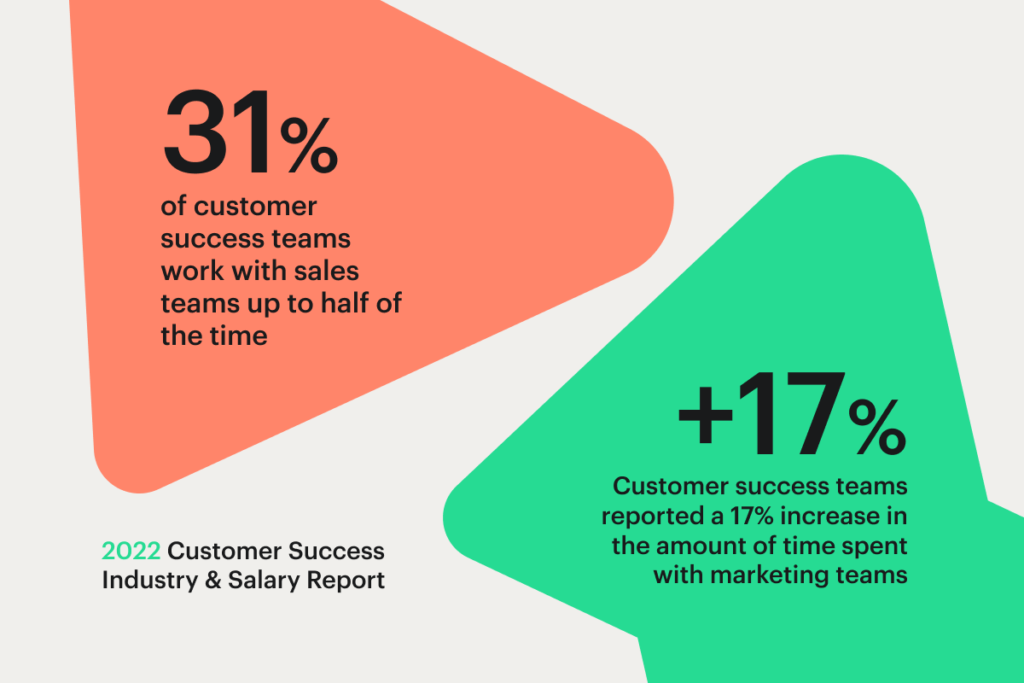Recent years have seen an astonishing rise in the popularity of subscription-based products and services. The world of ownership is being replaced by Spotify, Hulu, Amazon Prime, and a host of other on-demand services. And of course, customers can easily cancel the very second they become dissatisfied, lose interest, or feel they aren’t getting the value they expected.
Naturally, short-notice or no-penalty cancellations also greatly increase the risk of customer churn. Combined with intense competition and sign-up discounts, not to mention global inflation prompting many consumers to rethink their budgets, the customer retention stakes are high.
Given the current state of affairs, it’s no surprise that 58% of respondents in our 2022 Customer Success Industry & Salary Report identified churn reduction as a top priority. And with 96% of professionals also indicating that improving the customer experience is a “high” and “medium” goal, it’s clear that delighting customers is widely regarded as the best way to keep them coming back for more.
Leading the charge
With the potential for churn dramatically increasing, customer success is a key priority. While acquiring new customers is essential, ongoing development and deepening of relationships with existing customers is also vital for growth.
In this context, customer success departments are emerging as strategic leaders uniquely positioned to build a comprehensive journey that ensures customer needs and expectations are met at every stage.
We can see this development in our recent survey. For instance, it’s evident that customer success is continuing to mature as it develops from a niche business unit into a mission-critical function. When asked about their teams, 32% of professionals said that their department had been operating for up to four years, 37% said that their teams had grown by up to a quarter in the last 12 months, and the number of businesses with teams between 51-100 people increased by 20% in 2022.
At the same time, we also saw a 20% decline in the number of customer success departments that were established less than two years ago. These figures indicate that businesses that established customer success teams two years ago have been impressed with the value that they deliver. As a result, enterprises are significantly increasing customer success investments to help drive results.
Expert collaborators
To get a sense of the true impact of customer success teams on the businesses they support, we asked industry professionals which departments they spend the most time working with. The answers revealed that customer success teams are enterprise-wide collaborators—engaging with product management, sales, marketing, operations, and services and support departments.
Compared to 2021, the customer success teams that we surveyed spent more time with sales—31% worked with sales up to half of the time—and there was a 17% increase in the amount of time spent with marketing.
Continuing a trend from previous years, product management and operations teams emerged as key collaboration partners. This suggests that as customer success teams develop, they are branching out from working exclusively with sales and marketing—their closest relatives in traditional organizational structures—and are now helping other departments refocus their activities on their customers.
Developing a winning strategy
At Totango, we think of the customer journey as a product that should be optimized and managed every step of the way. That’s why prioritizing a culture of customer success is the first step in driving client engagements that go above and beyond their needs. After observing just how broadly customer success teams are collaborating in this year’s survey, we’re pleased to see that many companies are already leading the way in building customer-first cultures across their organization.
Nurturing collaboration and building strong customer cultures is an excellent first step, but to be truly effective we recommend supercharging this with a modular platform for customer success—what we refer to as Composable Customer Success. Inspired by innovations in software development, Composable Customer Success is all about a “building blocks” foundation that enables continuous recalibration and improvement to achieve the very best customer outcomes.
Our survey shows that 36% of respondents struggle to gain visibility into customer adoption, and 37% identified a reactive approach to customers as a core issue. With clear insight into trends, visibility into customer interactions, a strong customer-focused culture, and powerful tools that help businesses deliver flexible customer journeys, organizations become much better placed to respond as customer needs evolve.
To find out more about how our modular, iterative approach to customer success could help you drive customer outcomes and business value, click here to read the complete report.

